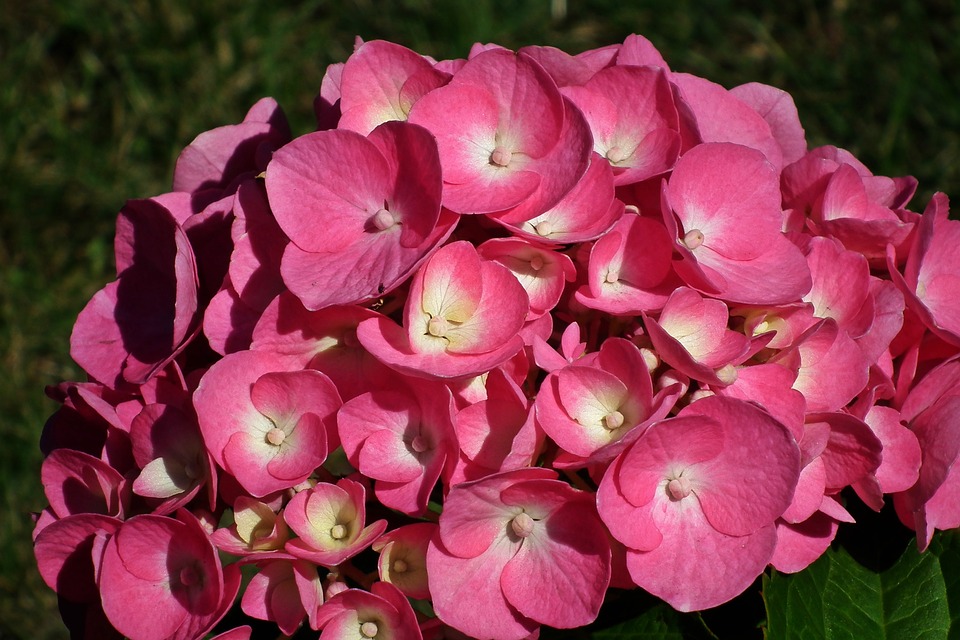Researchers say a drug made from the roots of the hydrangea could treat several common diseases, the Daily Mail reported. It said experiments showed that the medicine, halofuginone, may be used to treat diseases of the immune system, including multiple sclerosis (MS) and some types of arthritis. It said existing treatments are expensive and the more powerful drugs suppress the whole immune system and can leave patients at risk of infection and other side effects.
This story is based on experiments in mice, which found that the drug blocked the formation of a type of white blood cell (TH17) involved in autoimmune disease. The small-molecule drug eased symptoms in the mice and did not seem to affect other types of cells vital to the body’s defences, which means it may not otherwise inhibit the beneficial parts of the immune system. Mice with a multiple sclerosis-like disease were far less severely affected when given low doses of the drug. More research is needed to fully evaluate the potential of this drug and, as the Daily Mail said, before it is given the green light to treat autoimmune diseases.
Where did the story come from?
The research was carried out by Dr Mark S Sundrud from the Harvard Medical School and Immune Disease Institute and colleagues from other institutions. The study was funded by grants from the National Institutes of Health, Juvenile Diabetes Research Foundation, Cancer Research Institute and Portuguese Foundation for Science and Technology. The study was published in the peer-reviewed medical journal Science .
What kind of scientific study was this?
This was an animal study carried out in the laboratory using human tissue and mice. The researchers say that a disadvantage of current immunological therapies for autoimmune diseases (diseases where the immune system attacks the body) is that they are generalised in the way that they prevent inflammation and are not targeted. These powerful drugs are expensive, often have to be injected and, as they suppress the whole immune system, can leave patients at risk of infections.
They say a more selective therapy that targets specific parts of the disease process would be advantageous and possibly produce fewer side effects, such as the risk of infection.
Halofuginone is a small molecule that can be obtained from the hydrangea root. It is used in traditional Chinese medicine and supposedly has antimalarial qualities. It has also been tested in clinical trials for the treatment of scleroderma, a rare autoimmune disease that affects the skin and internal organs. This is also an autoimmune disease and so has similarities to the disease model the researchers were studying.
The researchers aimed to test whether halofuginone could selectively inhibit the white blood cells (TH17 cells) involved in autoimmune disease. These cells are part of the immune system and regulate the immune response. TH17 cells develop from other cells called CD4+ T-cells and then differentiate within the body into cells that produce several different signalling molecules called cytokines. Cytokines are proteins released by cells in response to infection or other stimuli to signal or regulate the immune response. The ‘differentiation’ has been linked to several autoimmune diseases, including multiple sclerosis and arthritis. Existing treatments for severe forms of multiple sclerosis and some forms of arthritis involve antibodies that neutralise some of the cytokines.
In this study, the researchers hoped to find that halofuginone would suppress the differentiation process.
The researchers cultured mouse CD4+ T-cells along with the cytokines that normally trigger the development of TH17 cells. They also cultured human CD4+ T-cells along with the cytokines. To test if halofuginone affected the differentiation of CD4+ T-cells into TH17 cells, they added the drug to the CD4+ T-cells. They then observed whether this reduced the production of IL-17, the principal cytokine made by TH17 cells. They did this for both the cultured mouse and human cells.
The researchers also tested the effect of halofuginone on a clinical scoring of symptoms in two groups of mice that had been artificially given an experimental form of immune brain disease, resembling multiple sclerosis in humans. One group of mice had a large number of TH17 cells, while the other group had few.
What were the results of the study?
When the researchers cultured mouse CD4+ T-cells with the cytokines and the halofuginone, they found that there was a pronounced decrease in the numbers of TH17 cells, the white blood cell involved in autoimmune disease.
A similar experiment with the cultured human CD4+ T-cells showed that halofuginone selectively suppressed the production of IL-17.
The mice with a large amount of TH17 cells in the brain and which had been given halofuginone developed the brain disease more slowly and less severely than the mice with another form of the disease that didn’t involve TH17 cells.
What interpretations did the researchers draw from these results?
The researchers say that, although the exact mechanism controlling TH17 differentiation remains unclear, their results highlight a previously unknown link between the pathway that links T-cell differentiation and immune-pathology. They say their research shows that the pathway identified is a selective one and that it regulates T-cell differentiation in a major way.
What does the NHS Knowledge Service make of this study?
This study will be of interest to researchers as it points towards specific parts of the immune pathway that can be targeted by novel drugs. There are several points to note:
More research is needed before it is known that hydrangea root or halofuginone have the same effects on immunological conditions in humans and are safe to use.
This was a well-conducted study, which presents the beginning of a novel approach to drug development. The researchers themselves are cautious in predicting that this drug will cure MS, diabetes or arthritis, but highlight that the research expands the knowledge about how these cells and cytokines are involved in autoimmune human processes.
